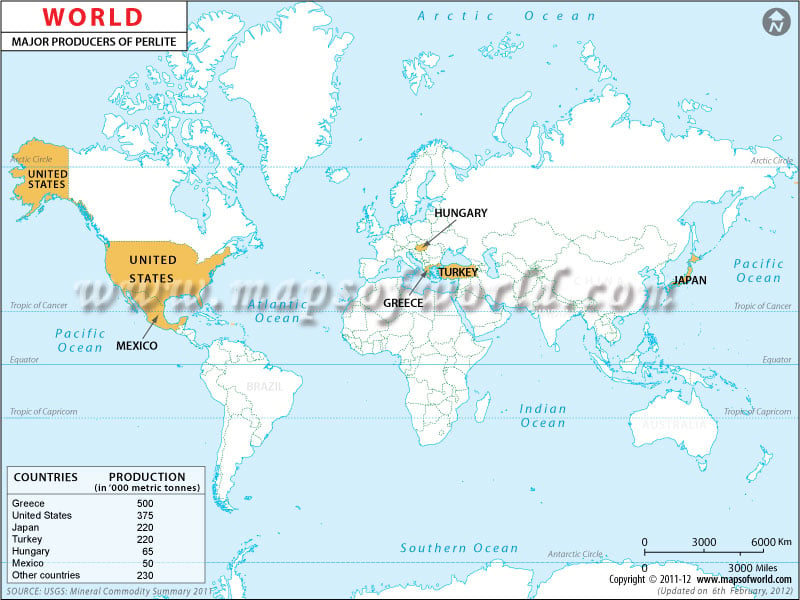Perlite is a generic term for siliceous rock that occurs free in nature. With a relatively high water content, perlite is actually a volcanic glass of amorphous nature. Generally white in color, perlite also comes in transparent light gray and glossy black when in crude form.
It is an industrial mineral and a commercial product useful for its light weight after processing. Ranging from high performance fillers for plastics to cements for petroleum, to its use as a filter media for pharmaceuticals, food products, perlite has a diverse range of applications. It is widely used as an abrasive in soaps, cleaners, and polishes.
Perlite is highly resistant to heat and this property makes it useful in the manufacture of refractory bricks, mortars, and pipe insulation.
Perlite is mined all over the world. There are about 700 million tonnes of perlite reserves in the world.
The World Map of Perlite Producers shows a list of the the major countries that have large reserves of perlite. As the data in the map shows, in 2010, Greece was the world’s largest producer of perlite with an annual production of five million metric tonnes. The United States is estimated to be the second-largest perlite producer and the largest consumer of crude and expanded perlite. The annual production of perlite in the US accounts to 375, 000 metric tonnes.
Japan ranks third in the production of perlite.Other leading countries producing perlite include Turkey, Hungary, Mexico, China, Armenia, Italy, and Philippines.
Perlite is used in construction applications such as under-floor insulation, ceiling tiles, chimney linings, paint texturing, gypsum boards, and roof insulation boards.
WORLD MAJOR PRODUCERS OF PERLITE-2010
| COUNTRY | PRODUCTION IN THOUSAND METRIC TONNES |
| Greece | 500 |
| UnitedStates | 375 |
| Japan | 220 |
| Turkey | 220 |
| Hungary | 65 |
| Mexico | 50 |
| Othercountries | 230 |
| World total(rounded) | 1700 |

